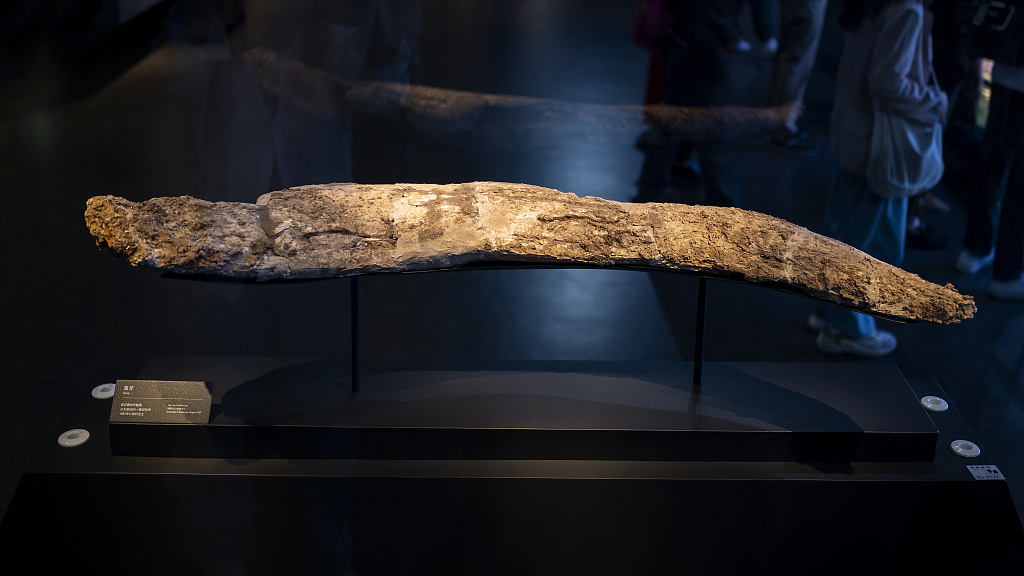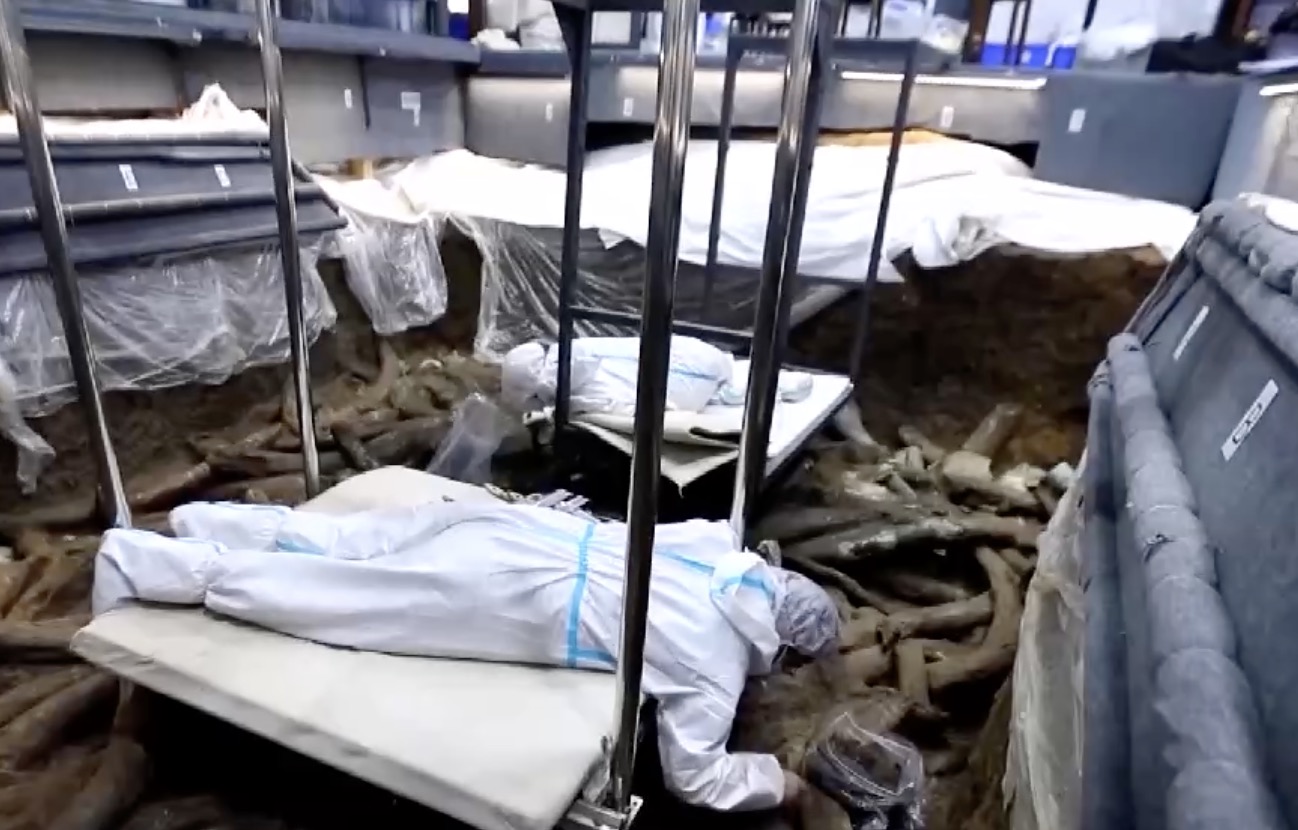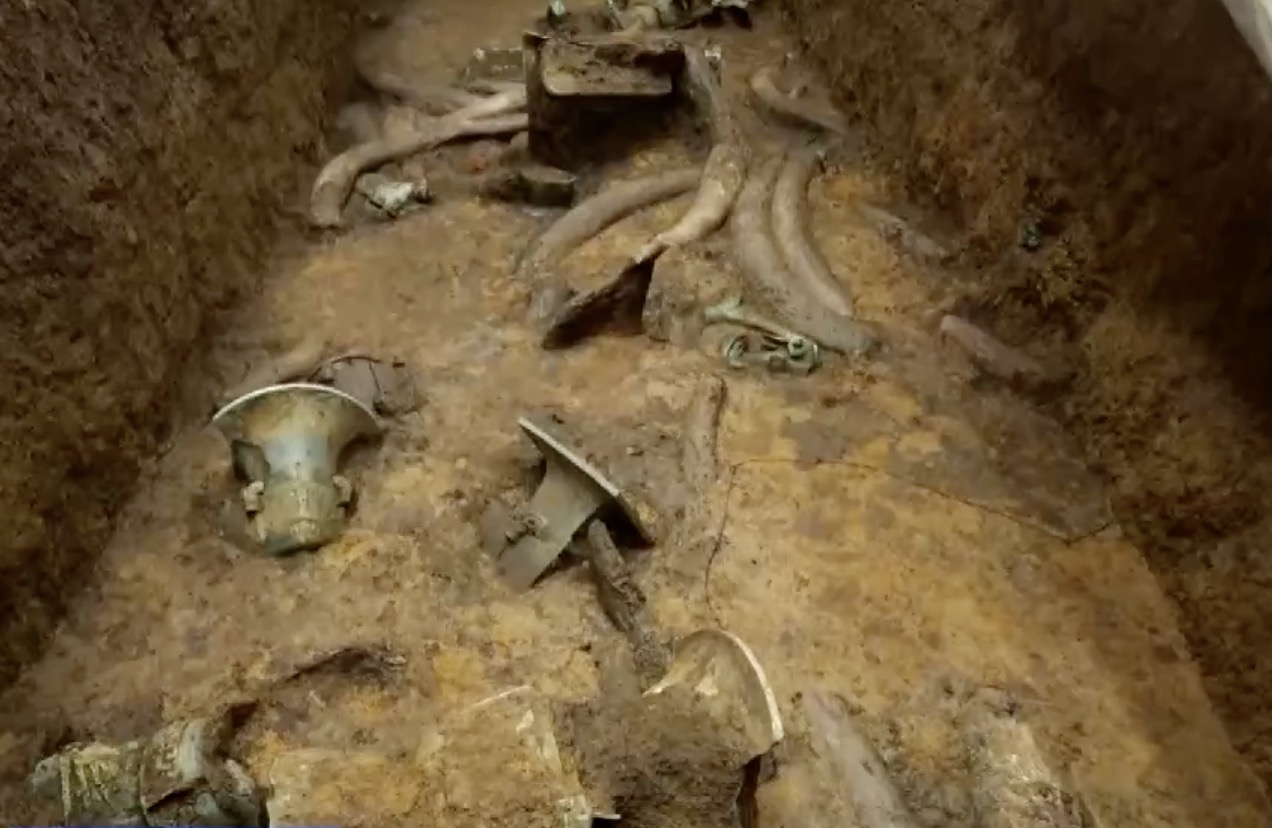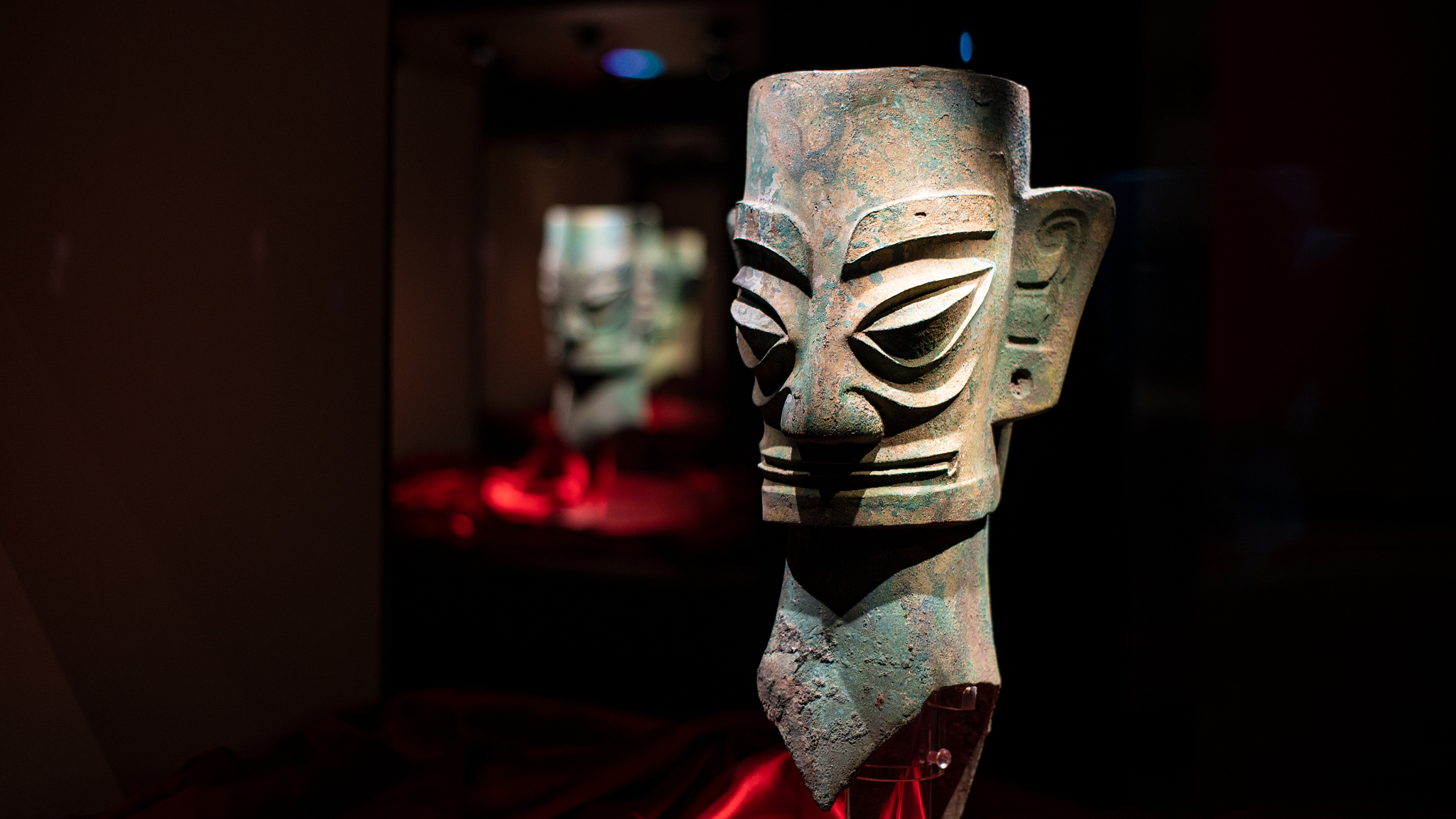
Unearthed cultural relics of ivory discovered from Sanxingdui Ruins in Guanghan City of southwest China's Sichuan Province. /CFP
Unearthed cultural relics of ivory discovered from Sanxingdui Ruins in Guanghan City of southwest China's Sichuan Province. /CFP
Some 13,000 newly unearthed cultural relics such as gold ware, jade and ivory pieces were discovered from six sacrificial pits in a new round of excavation at China's ancient ruins site Sanxingdui, the Sichuan provincial cultural relics and Archaeology Research Institute announced Monday.
Located in the Guanghan City of southwest China's Sichuan Province, the Sanxingdui ruins, a major project of "Archaeological China", have shed light on the ancient Shu civilization (dating back 4,500 to 3,000 years) and the cultural origins of the Chinese nation.
The ruins are regarded as one of the most significant sets of ancient remains found in the 20th century.

Unearthed cultural relics of ivory discovered from Sanxingdui ruins in Guanghan City of southwest China's Sichuan Province. /CMG
Unearthed cultural relics of ivory discovered from Sanxingdui ruins in Guanghan City of southwest China's Sichuan Province. /CMG
High-tech new materials, methods
For this new round of excavation, according to archeologists, cutting-edge technologies have been applied for the exploration and excavation processes, with new materials and methods being adopted for extracting and preserving the relics.
The archaeological team excavated a large number of ivory tusks from four pits (Number 3, 4, 7 and 8) in the sacrificial area. Microscopic observation found out that more than 20 unearthed bronze wares and ivory pieces had textiles on the surface.
Archeologists say many ivory relics remained intact but have become very fragile after thousands of years of burial, making it difficult to retrieve and restore them.

Staff working on unearthed cultural relics of ivory discovered from Sanxingdui Ruins in Guanghan City of southwest China's Sichuan Province. /CMG
Staff working on unearthed cultural relics of ivory discovered from Sanxingdui Ruins in Guanghan City of southwest China's Sichuan Province. /CMG
Zhao Hao, an archeologist at the sacrificial pits of the Sanxingdui Ruins, told China Media Group (CMG) that high-tech methods have been used to restore different types of relics unearthed from the site, as new materials developed with new technology assisted them to restore the unearthed ivory relics.
"During the excavation process, we mainly used lightweight polymer materials to quickly and easily extract the soft ivory pieces from earth and later remove the soil on their surface. With this long-term protective agent, ivory pieces can be better preserved under normal temperature or cold and wet environment," said Zhao.

Unearthed cultural relics discovered from Sanxingdui ruins in Guanghan City of southwest China's Sichuan Province. /CMG
Unearthed cultural relics discovered from Sanxingdui ruins in Guanghan City of southwest China's Sichuan Province. /CMG
In order to preserve DNA and other protein information contained in the relics, the ivory pieces are placed in the cold storage, while the bronzeware relics have been stored in a state of low oxygen and low temperature.
"Many excavation technologies used in the Sanxingdui ruins will also be applied to other historical sites, " said Zhao, adding that this new round of excavation of Sanxingdui ruins should not only be featured just one single technology, but an improvement of the overall project management which is very different from the previous archaeological excavations.

A bronze mask displayed at the Sanxingdui Museum in Guanghan in southwest China's Sichuan Province, December 22, 2019. /CFP
A bronze mask displayed at the Sanxingdui Museum in Guanghan in southwest China's Sichuan Province, December 22, 2019. /CFP
Chinese wonder of Sanxingdui
Located in the city of Guanghan which is around 60 kilometers from the provincial capital Chengdu, the Sanxingdui Ruins covers an area of 12 square kilometers.
Earlier in 1986, archaeologists discovered thousands of precious cultural relics, including a gold scepter and a bronze sacred tree, which aroused worldwide interest.
So far, more than 50,000 items of bronze ware, jade, gold, pottery and ivory artifacts have been unearthed from the site.
In the future, archaeologists will continue to explore the ruins outside the sacrificial area, outlining the ancient kingdom at Sanxingdui.
Read More:
Some 13,000 relics unearthed at new Sanxingdui ruins site discovery

